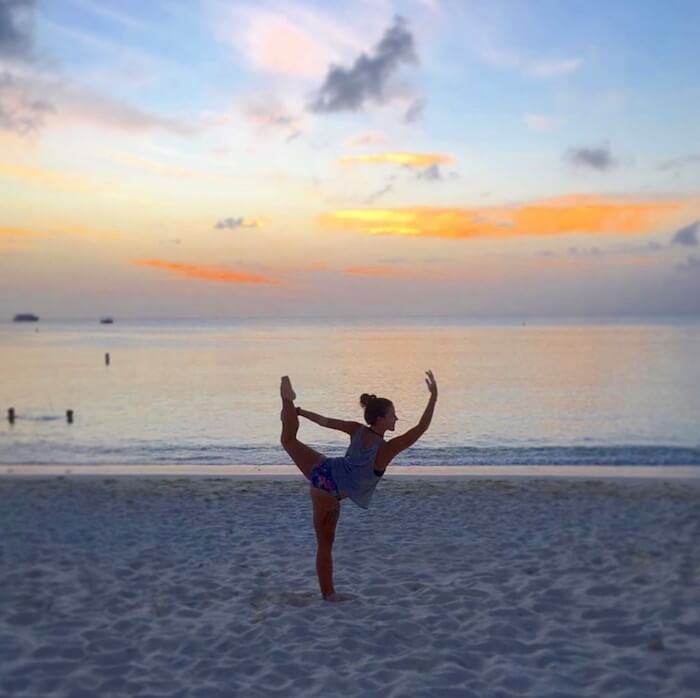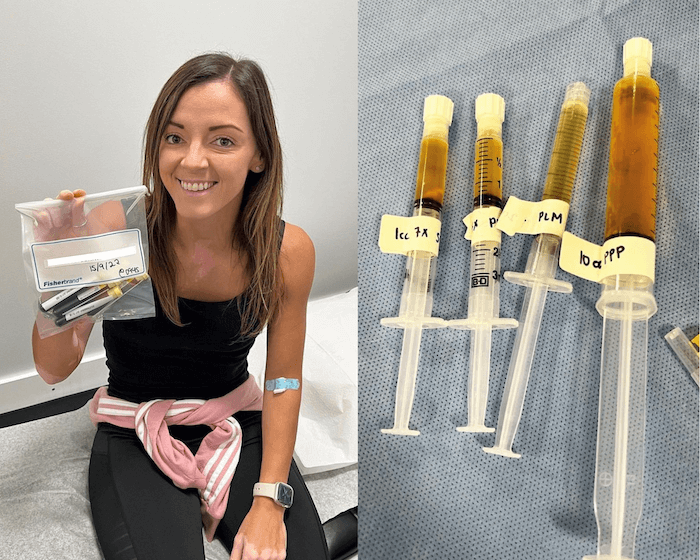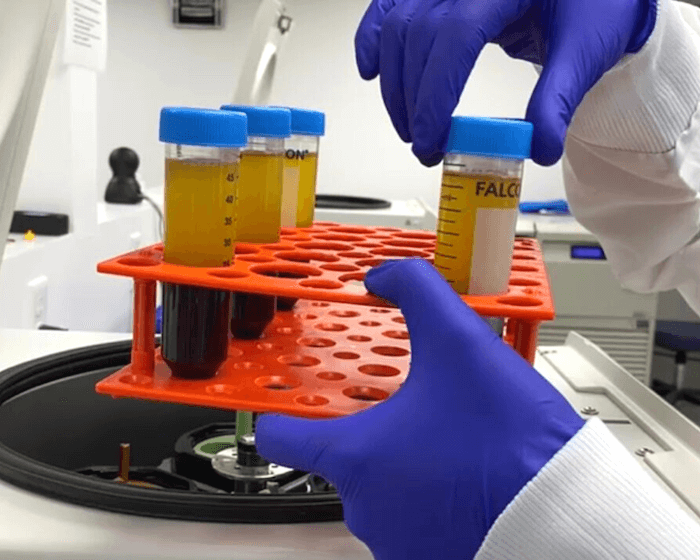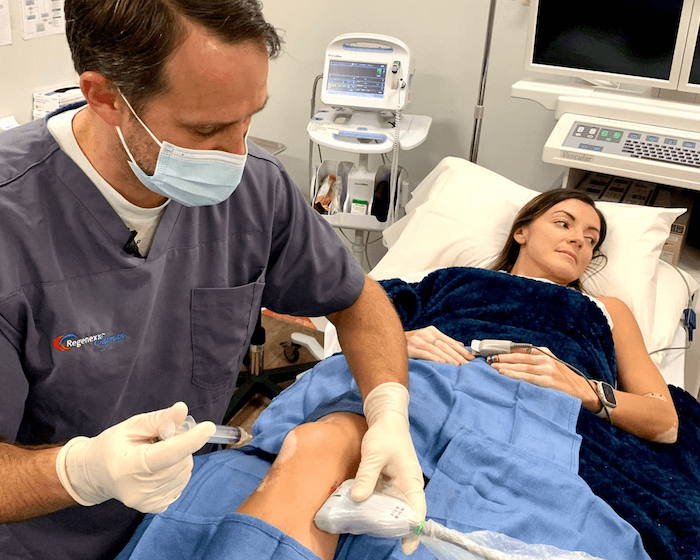Behind-the Scenes: Ankles, Knees, and SCP
We often share insights into the Regenexx Cayman patient experience, but today, we’re taking an in-depth, behind-the-scenes look. Recently, our team member, Jen, became a patient for the day and underwent PRP treatment for bilateral knee pain. Here, she shares her full story.
“I’ve always been a very active person. I started dancing at the age of five and never really stopped. I spent many years in the UK performing and teaching dance. My free time has always involved a regular gym routine, yoga, hiking, climbing, running, and since moving to Cayman, playing Gaelic football, beach and indoor volleyball, pickleball, watersports and scuba diving. I’ve dealt with my fair share of injuries over the years, including chronic knee pain in my right knee, but I’ve continued to be active in one way or another.

Almost two years ago, I was injured, and I couldn’t even walk my dog. I had a torn ligament (ATF) in my left ankle, undiagnosed knee pain, and joint instability. Walking was tough, so the idea of box jumps in the gym, or my “very average” performance on the Gaelic pitch, was far from achievable. Overnight, I could no longer participate in the activities that make up my lifestyle. Gradually, with a lot of physiotherapy and a heavy-duty ankle brace, I was able to slowly return to activities, but I was ignoring the pain and post-exercise soreness. I also lost a lot of strength and confidence. With my dance and athletic background, I knew my symptoms wouldn’t improve on their own.
Six months ago, I had a consultation with Dr. Williams, a Regenexx physician with a particular interest in sports injury recovery and functional performance. During the consult, Dr. Williams learned about my background and medical history, assessed my range-of-motion and imaging, and performed an ultrasound to see the extent of the damage. 18 months post-injury, my ligament was still approximately 60% torn – no wonder I was still in so much pain!
Dr. Williams recommended PRP (platelet-rich plasma) injections, directly into the affected ligament, as well as into the ankle joint space (intra-articular). Every day, I hear how our treatments help patients with far more severe conditions than mine, so I was excited to see how I could benefit, too. I followed his recommendation to receive the Regenexx-PL PRP treatment.

The procedure lasted around 40 minutes. I was awake the whole time, and the team was brilliant. As someone who has never been a fan of needles, I was apprehensive, but the caring, calming, and personable demeanor of both Dr. Williams and the nursing team really put me at ease.
Post-procedure, the physician recommended I take downtime for a few weeks and begin to exercise as tolerated. Within a few days, I was walking around with no trouble, and the only sign of having the procedure was some swelling around the ankle joint, which was expected. The discomfort was minimal, and within a few weeks, I was able to return to my gym routine. I tailored some exercises to suit my ability – something I’d been doing since my injury anyway.
Within three months, I returned to the Gaelic pitch, no longer needed to tailor exercises at the gym, and finally felt like myself again. Everything felt more stable, there was less pain, and less post-workout soreness. It all sounds great, right? Sadly not. Having spent so many months focusing on my ankle injury and rehab, returning to my full level of activity worsened my knee pain, which had been overlooked for so long. Pain, swelling, instability, weakness… I knew I needed to take care of the problem before it got worse.
Enter Dr. Newton, another visiting physician at Regenexx Cayman. The start of the process was very similar to the first: a consult to understand the root cause, a physical assessment of my injured left knee and my longstanding right knee pain, and an ultrasound. I scheduled my next treatment and was referred for an MRI to look a little closer at what could be causing the pain, discomfort, and instability. As it turns out, there were a few reasons!
The MRI showed considerable damage to ligaments, tendons, meniscus, and bone. The main cause of my pain was fibula instability. Essentially, the ligaments and tendons in my knee were damaged to the point where my fibula wasn’t as stable as it should be. Combined with instability in my ankle, caused by the injury, this was something that needed to be treated sooner rather than later. I returned to Dr. Newton, who explained the MRI report and imaging, and repeated his physical assessment and ultrasound to see if there had been any changes since my last visit. He explained my treatment options, recovery times, and anticipated outcome.
I opted for advanced PRP treatment – a mixture of Regenexx-PL and Regenexx-SCP. Given the success of my previous treatment, and taking my treatment goals into consideration, it was a treatment plan we were both happy with. Dr. Newton also explained another treatment option, but after considering my lifestyle, he didn’t feel it was my best option. Being treated as an individual, rather than by a one-size-fits-all approach, was incredibly refreshing – I knew I was in excellent hands.
The next day was treatment day. The first step was a blood draw, which was then sent to the lab we have here in Cayman. My whole blood was processed using advanced laboratory techniques to separate the blood plasma from the blood platelets. The plasma was then concentrated according to Dr. Newton’s orders, and within a couple of hours, it was ready for re-injection.

I knew this procedure would be bigger than the last one. I was having three joints treated (bilateral knees and a “top-up” in my left ankle), a higher concentration of platelets, and more injection sites in each joint. I felt less anxious, having experienced a similar procedure, but I wasn’t totally sure what to expect. Once again, Dr. Newton and the nurses ensured I was comfortable and calm, and we chatted the entire time. At one point, we were even singing along to one of my favorite songs (“Lose Yourself” by Eminem), but the less said about that the better!
First up were my knees. Using ultrasound imaging, Dr. Newton could accurately target the pain points he had identified and inject the PRP into each problem area. The injections also contain lidocaine, a local anesthetic to reduce discomfort during the procedure. Some areas were more tender than others, but during re-injection, the main sensation was a feeling of pressure. When it came to injecting my ACL, it was a similar process, but due to the nature of this deep-set ligament, fluoroscopy is used. This is a form of real-time x-ray imaging, which uses contrast to make the ligament visible on screen. As if all of that wasn’t cool enough, I was able to see this happening, in real-time, on the screens; although, I appreciate not everyone would want to see that. Personally, I find the whole process fascinating.

After around 70 minutes on the table, I’d had three joints treated: my right knee (due to chronic pain after years of dancing), my left knee (caused by acute trauma), and my left ankle (to stabilize the joint further). I left the clinic on crutches and was advised to rest and take prescribed pain relief as needed.
The first few days were slow going. There was no real pain, but a lot of tenderness and stiffness – as you’d expect after over 10 injections. On day two, I was able to slowly walk without crutches, taking extra care on stairs, and getting up or down from a seated position. Within a week, day-to-day movements were no longer a problem.
It’s important to remember that all patients respond differently to treatment – there are many factors to consider, and no two patients or procedures are the same. Currently, I’m three weeks post-procedure. I have some mild discomfort and don’t quite have my full range-of-motion back yet. That said, one of the main problems that needed treating was joint instability caused by ligament laxity, so the goal is for everything to feel a little “tighter” and more stable than I’ve become accustomed to for so long!
I’m yet to return to the gym, but I’m happy to take the downtime my body needs to recover and to begin the recommended rehab with my physio. I know that taking time out now will benefit me in the future. It will be a little while before I’m back on the football pitch, but I’m excited to start slowly rebuilding my strength in the coming weeks, so I can continue with the activities I enjoy the most.
I really can’t thank “my team” enough. How lucky am I to get to work with such talented individuals?! From our incredible team of Regenexx physicians, including Dr. Williams and Dr. Newton, nurses, and clinic coordinators to our team of cell biologists and lab technicians who hand-process samples to tailored doses, everyone plays their part in the entire treatment process. Hearing how our treatments have helped so many patients take back control of their lives is one thing, but experiencing it for myself is another.”
My Final Thoughts